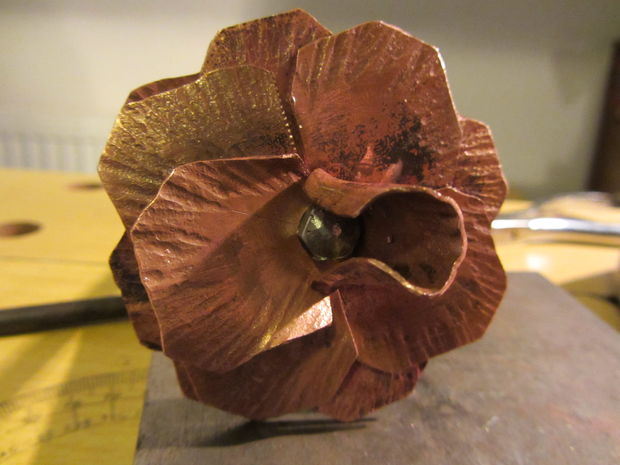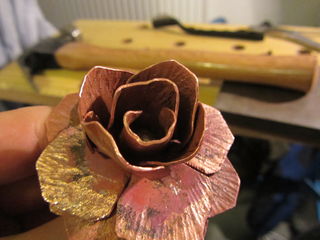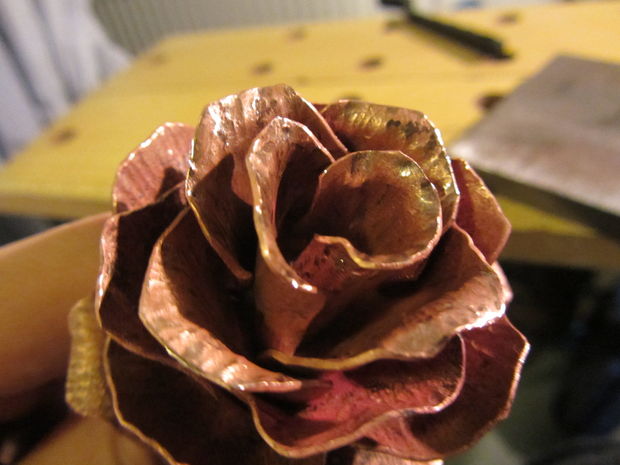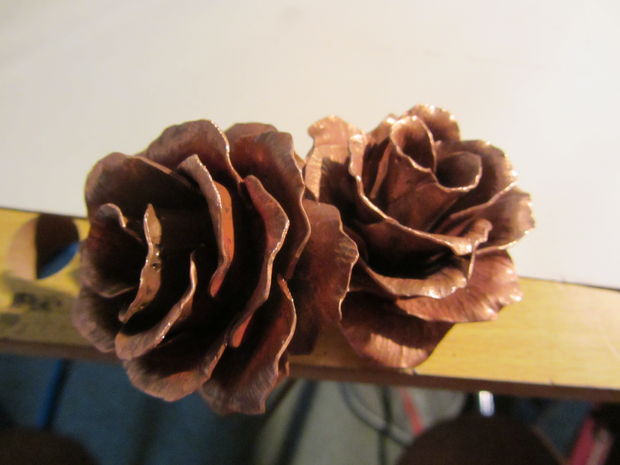





So, pick up your round pliers (so you don't leave grip marks) and get to work.
Begin by taking your rectangle and folding one of the petals up and around the rivet. It can be very useful to start at the part of the petal that is closest to the stem, and work outwards - that applies for all this shaping. If at any point the metal becomes unworkable, stop - you can't force it. Simply anneal that section of the copper (by tactical application of a blowtorch, for example) and keep going. You really don't want to break one petal now.
Repeat with the other petal of the rectangle, but form it around the first petal to form a 'bud'. Now, use your pliers to bend up, shape and curve the next 16 petals to your liking - I can't really be much help here, as it's all down to what your idea of a rose is. However, I can tell you what I do. I normally bend and curve the first 8 (top two layers of squares) quite severely upwards and inwards, to form a larger bud. I then steadily reduce the angle of the bends for the next two layers, to make it so the bud is opening out.
Finally, curl the tops of your petals outwards to expose the texturing you worked on, and crinkle the edges - this step really makes a huge difference.
And that's it! Apart from some cleaning and finishing, you're all done! Congrats!
To clean up any oxidation from annealing, use a wire brush followed by sandpaper - wire wool also works well to get into all the nooks and crannies you've now made. Either burnish the steel/brass with sandpaper to get it to gleam, or leave it dull - both look nice, and complement/offset the rose.
At long last, you can apply a spray of clear coating (I hate the stuff, so don't bother - it will make the colour last, but adds an unnatural gleam).


 我要赚赏金
我要赚赏金

